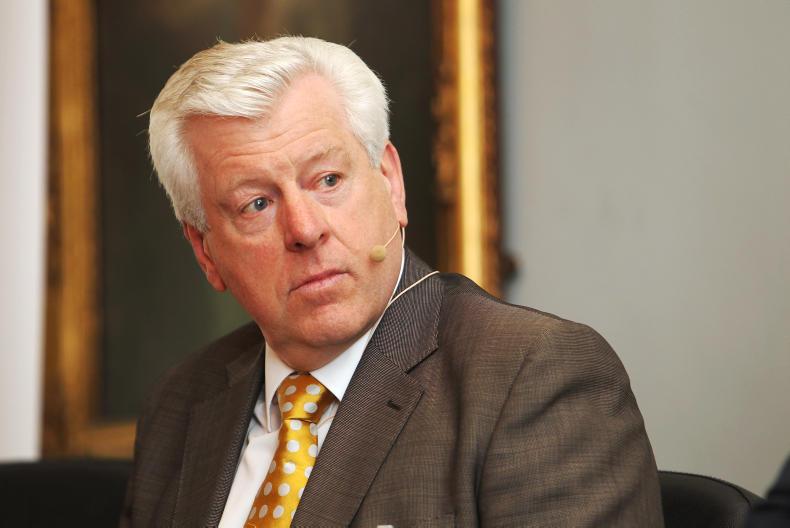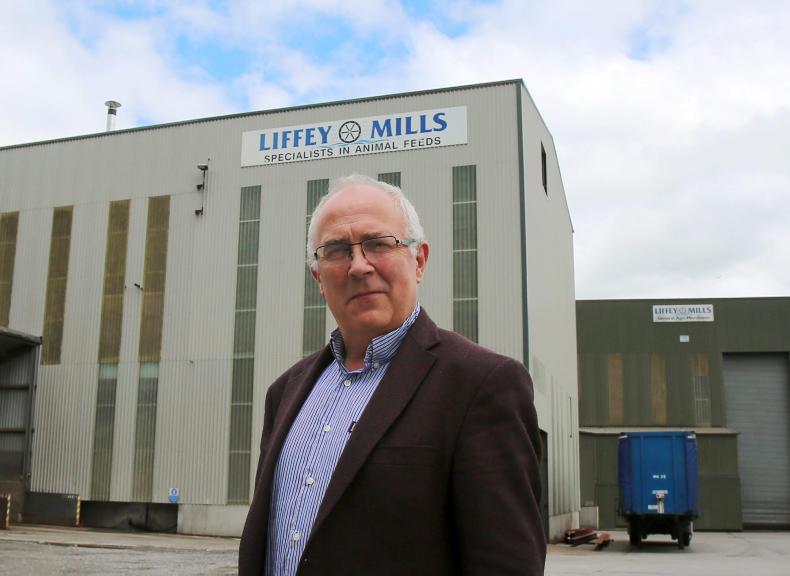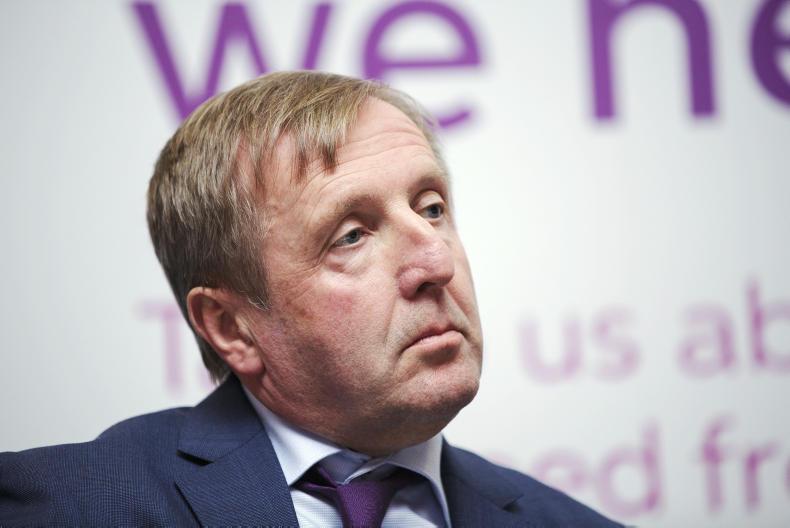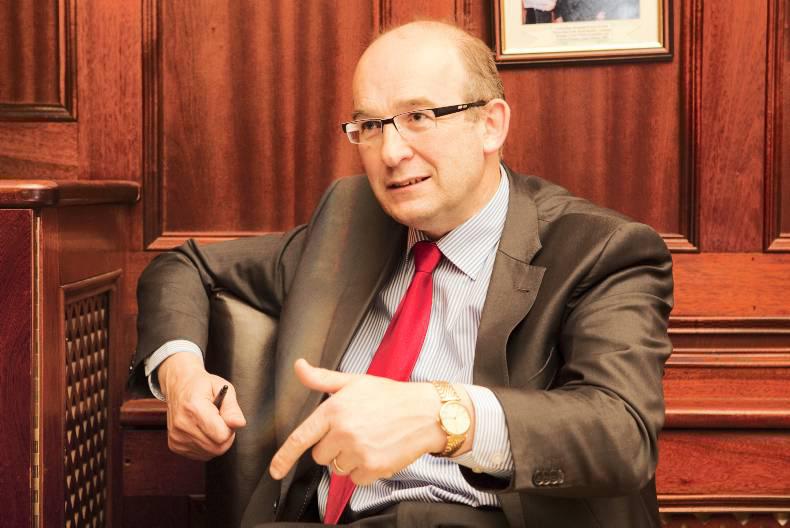Jim Woulfe, CEO of Dairygold
After what have been two really challenging years from a dairy business perspective, we look forward with cautious optimism to 2017.
Despite the fact that there are many negative market forces prevailing, such as EU powder stocks, a slowdown in the Chinese economy, the Russian ban, weaker oil prices and the very dark clouds of Brexit, the market movements of the past six months have once again demonstrated to all stakeholders that we operate on global dairy platform which is so, so influenced by the simple economics of supply and demand.
As we move into 2017, the tsunami of EU milk post-quota witnessed in 2015/2016 has now eased and the EU is now in a low-digit steady growth state, with further pressures on milk production emerging from environmental hurdles at individual country level.
In the southern hemisphere, poor milk prices combined with bad weather have curtailed supplies significantly in their peak season.
The only exception to a more curtailed supply is the US. The easing of global supplies has been the single driver of prices and this trend is likely to continue into 2017. The demand side remains steady, but there is such a fine line between both.
Dairy farmer incomes are so influenced by milk price but equally as important to farm profitability is the inputs costs side. As we enter 2017, the two main farm inputs of fertiliser and feed are much better value positioned price wise than 12 months ago.
John Horgan, MD of the Kepak Group
In the beef sector the marketing of the forecasted 2017 additional Irish cattle supplies is much talked about.
I believe the processing sector is well positioned to market the extra volumes at prevailing market prices and to return fair market value, measured fairly against our competitive set.
Our sector has the infrastructure and marketing capability to deliver inside and outside the EU.
It won’t be the additional volume of beef from Ireland that will primarily shape the Irish beef price charts for 2017. It will be a combination of a few factors such as key currency exchange rates. Also in play will be EU consumer demand and EU regional supply balances. 
It will also be the usual international volume shifts and the related currency-induced competitiveness of the main international beef exporting countries, most notably Australia and Brazil.
For example, the current cyclically reduced Australian supply has opened up both direct and indirect trading opportunities for Irish beef in the Philippines and other Asian and Middle East markets, which has helped to somewhat cushion Irish prices from the 2016 foreign exchange turbulence.
In 2017 I hope that we can do even better, supported by freer access to the US, when all the technical hurdles have been worked through, and a long-awaited positive decision on access to China.
In terms of trends that are likely to persist into 2017 and beyond, the shining star must be the positive marketing success built on certifiable breeds such as Irish Angus and Herefords. These breeds, coupled with their inherent lighter mature carcase weights, are popular with discerning retail and foodservice customers.
Lamb
In the case of the lamb sector, I see no reason why the relatively favourable 2016 price levels should vary much across 2017. New Zealand supplies, cyclically, remain depressed. That said, the renationalisation of our largest market, France, is a continuing challenge and probably the main reason why we also need to fast-track access to US and China during 2017. There has been a huge erosion in the value of lamb byproducts such as skins and edible offal and it is unlikely these values will improve any time soon.
Pigs
In the case of the pig sector, my wish would be for more stability of prices as opposed to excessive swings, which invariably drive production margins into the red and make marketing and forward planning more complex.
Pat Ryan, MD of Liffey Mills
On the feed side, demand is good driven by the dairy sector. It’s brisk enough, especially with extra cows and a trend of earlier calvings.
On beef, there is a reasonable demand there even with the poorer beef prices. That’s probably driven by extra numbers there too.
 Looking at grain prices, a bit of strength came into the market in December. There is no overhang or surplus in domestic supply this year. There has been good native demand.
Looking at grain prices, a bit of strength came into the market in December. There is no overhang or surplus in domestic supply this year. There has been good native demand.
Overall, though, we are minnows in a very large pond. There’s nothing to tell me that prices will be any better next year because of global supplies. Unless we get a huge weather shock or something that we haven’t seen in recent years, the trend is likely to continue similar to this year.
Michael Creed, Minister for Agriculture
It is difficult to look beyond March 2017 and the proposed date for Britain to invoke Article 50 and formally commence the process of exiting the EU.
If I had one hope for this process it is that pragmatism would prevail and that all sides in the negotiations would work in the best interests of both the EU and the UK, which are in the main compatible, while leaving ideologies and red lines at the door. Early priorities for 2017 include the opening of the Agri loan fund and the successful execution of the Sheep Welfare Scheme. 
Pursuit of new trade opportunities will continue at an accelerated pace, while at EU level I would like to see further developments in the area of protecting the place of the farmer in the supply chain. Finally, I hope all readers have a safe 2017. We must all redouble our efforts in the coming year to make sure our farms are safer places to work and to ensure that fewer families and communities are visited by the devastating tragedy of farm accidents and fatalities.
Joe Healy IFA president
Farm incomes, including commodity prices and input costs, will be my top priority and the IFA’s full focus throughout 2017 for farmers in all sectors.
We will continue to press for measures to support farm incomes, improve prices and reduce costs at all levels, engaging with Commissioner Hogan, Minister Michael Creed, TDs, senators, retailers, processors, banks, fertiliser companies and feed merchants.
John Comer, ICMSA president
I have real anxiety about the way Brexit could unfold when Article 50 is triggered in 2017.
ICMSA wants the Government to insist that Ireland has vital national interests, to a degree that no other member state has. I’d like to hear our Government set out our stall in a manner that cannot be mistaken or misinterpreted.
We expect to see milk price recover and meaningful progress made by the Commission on unfair trading practices.
Paddy Kent, ICSA president
ICSA wants beef price to rise to a sustainable level – but we are not over-confident that will happen in 2017 – and to see an end to the nonsense of QA penalties for cattle over 30 months or with more than four residencies.
Vincent Roddy, INHFA national chair
INHFA wants future ANC payments to reflect the actual constraint on the land. We want all applicants in GLAS III to be accepted and that participation in a commonage management plan should protect all payments in other schemes, including BPS and ANC.
Sean Finan, Macra na Feirme president
Macra’s wish for 2017 is that all future farm schemes announced are young farmer-proofed and not stop/start and that there is a fully functioning National Reserve in 2017.We want the Government to honour its commitment to achieve recognition from Brussels for the older young farmers and new entrant parent partnership farmers.






 This is a subscriber-only article
This is a subscriber-only article


















SHARING OPTIONS: